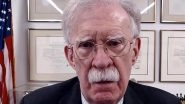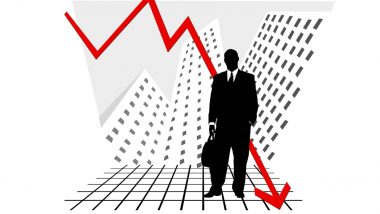Jackson Hole, August 27: Rising trade barriers. Aging populations. A broad transition from carbon-spewing fossil fuels to renewable energy. The prevalence of such trends across the world could intensify global inflation pressures in the coming years and make it harder for the Federal Reserve and other central banks to meet their inflation targets.
That concern was a theme sounded in several high-profile speeches and economic studies presented Friday and Saturday at the Fed's annual conference of central bankers in Jackson Hole, Wyoming. For decades, the global economy had been moving toward greater integration, with goods flowing more freely between the United States and its trading partners. Inflation in Food Items Expected to Be Transitory; Global Uncertainty and Domestic Disruptions May Keep It Elevated, Says Finance Ministry.
Lower-wage production overseas allowed Americans to enjoy inexpensive goods and kept inflation low, though at the expense of many US manufacturing jobs. Since the pandemic, though, that trend has shown signs of reversing. Multinational corporations have been shifting their supply chains away from China. They are seeking instead to produce more items — particularly semiconductors, crucial for the production of autos and electronic goods — in the United States, with the encouragement of massive subsidies by the Biden administration.
At the same time, large-scale investments in renewable energies could prove disruptive, at least temporarily, by increasing government borrowing and demand for raw materials, thereby heightening inflation. Much of the world's population is aging, and older people are less likely to keep working. Those trends could act as supply shocks, similar to the shortages of goods and labour that accelerated inflation during the rebound from the pandemic recession.
“The new environment sets the stage for larger relative price shocks than we saw before the pandemic,” Christine Lagarde, president of the European Central Bank, said in a speech Friday. “If we face both higher investment needs and greater supply constraints, we are likely to see stronger price pressures in markets like commodities — especially for the metals and minerals that are crucial for green technologies.”
This would complicate the work of the ECB, the Fed and other central banks whose mandates are to keep price increases in check. Nearly all central banks are still struggling to curb the high inflation that intensified starting in early 2021 and has only partly subsided.
“We are living in this world in which we could expect to have more and maybe bigger supply shocks,” Pierre-Olivier Gourinchas, chief economist at the International Monetary Fund, said in an interview. “All of these things tend to make it harder to produce stuff and make it more costly. And that is definitely the configuration that central banks dislike the most.”
The shifting patterns in global trade patterns sparked the most attention during Saturday's discussions at the Jackson Hole conference. A paper presented by Laura Alfaro, an economist at Harvard Business School, found that after decades of growth, China's share of US imports fell 5 per cent from 2017 to 2022. Her research attributed the decline to tariffs imposed by the United States and the efforts of large US companies to find other sources of goods and parts after China's pandemic shutdowns disrupted its output.
Those imports came largely from such other countries as Vietnam, Mexico and Taiwan, which have better relations with the United States than does China — a trend known as “friendshoring.” Despite all the changes, US imports reached an all-time high in 2022, suggesting that overall trade has remained high. Possible 2nd Round Shock of Food Price Rise on Inflation Prompted RBI to Keep Repo Unchanged: MPC Minutes.
“We are not deglobalising yet,” Alfaro said. “We are seeing a looming Great Reallocation' " as trade patterns shift. She noted that there are also tentative signs of “reshoring” — the return of some production to the United States. Alfaro said the United States is importing more parts and unfinished goods than it did before the pandemic, evidence that more final assembly is occurring domestically. And the decline of US manufacturing jobs, she said, appears to have bottomed out.
Yet Alfaro cautioned that these changes bring downsides as well: In the past five years, the cost of goods from Vietnam has increased about 10 per cent and from Mexico about 3 pe cent, adding to inflationary pressures. In addition, she said, China has boosted its investment in factories in Vietnam and Mexico. Moreover, other countries that ship goods to the United States also import parts from China. Those developments suggest that the United States hasn't necessarily reduced its economic ties with China.
At the same time, some global trends could work in the other direction and cool inflation in the coming years. One such factor is weakening growth in China, the world's second-largest economy after the United States. With its economy struggling, China will buy less oil, minerals and other commodities, a trend that should put downward pressure on the global costs of those goods.
Kazuo Ueda, governor of the Bank of Japan, said during a discussion Saturday that while China's sputtering growth is “disappointing," it stems mainly from rising defaults in its bloated property sector, rather than changes to trade patterns. Ueda also criticised the increased use of subsidies to support domestic manufacturing, as the United States had done in the past two years.
“The widespread use of industrial policy globally could just lead to inefficient factories,” Ueda said, because they wouldn't necessarily be located in the most cost-effective sites.
And Ngozi Okonjo-Iweala, director-general of the World Trade Organisation, defended globalisation and also denounced rising subsidies and trade barriers. Global trade, she asserted, often restrains inflation and has helped significantly reduce poverty. “Predictable trade," she said, "is a source of disinflationary pressure, reduced market volatility and increased economic activity. ...Economic fragmentation would be painful.”













 Quickly
Quickly


